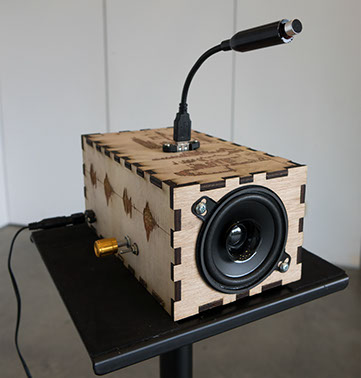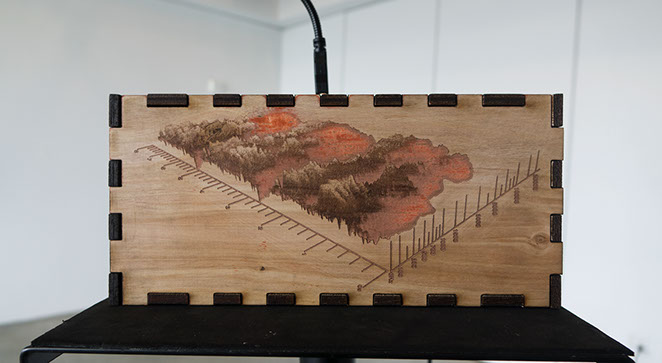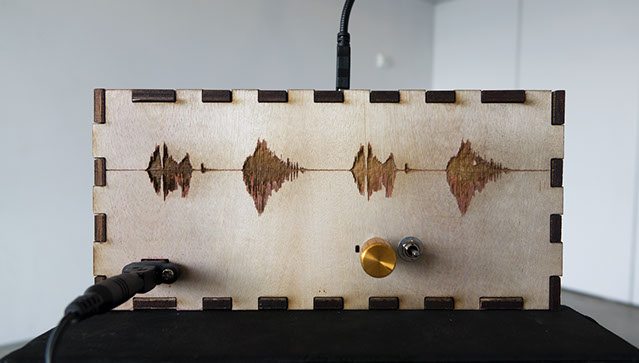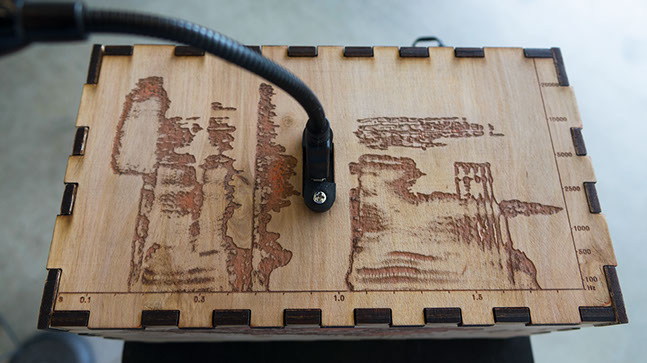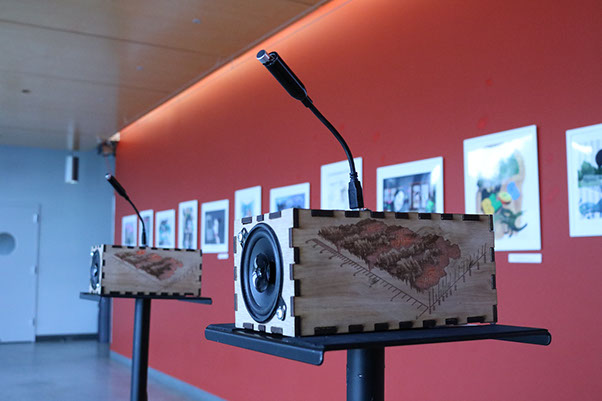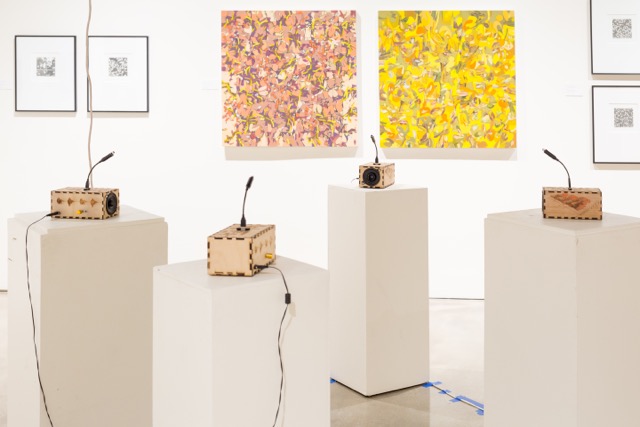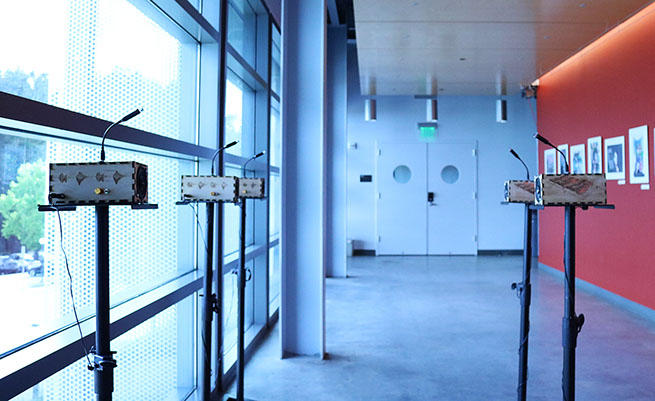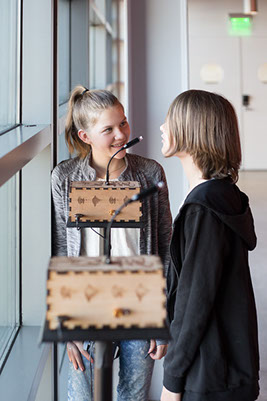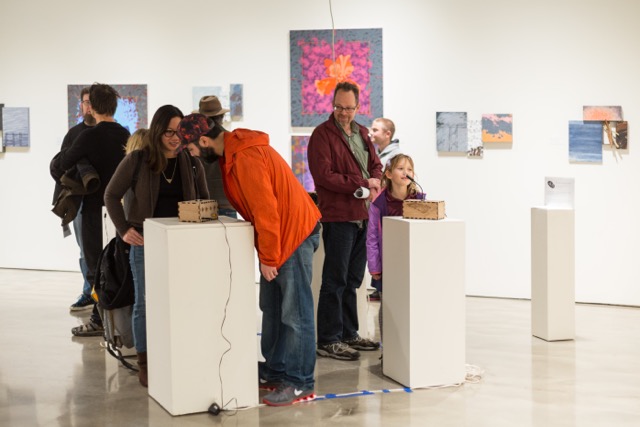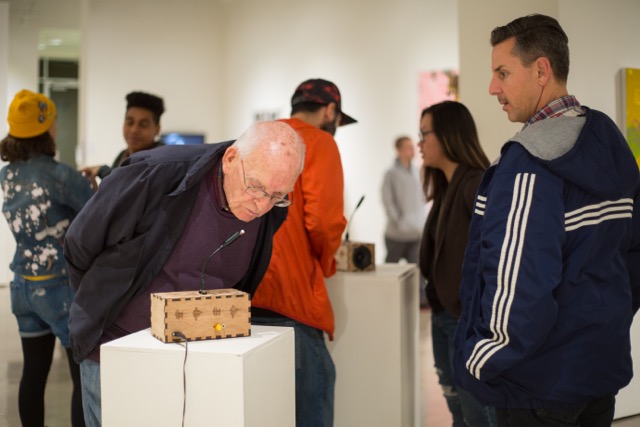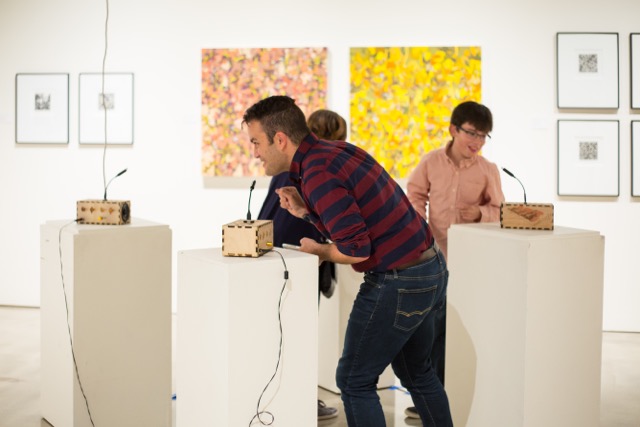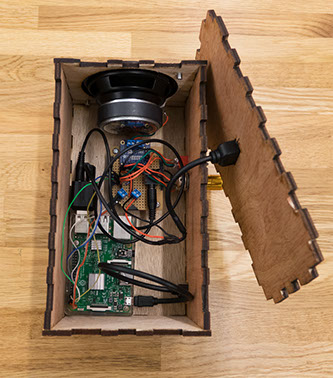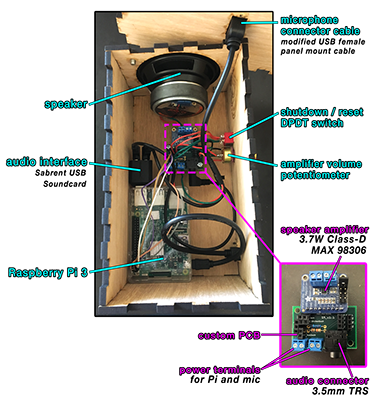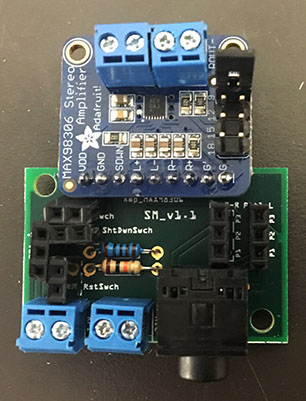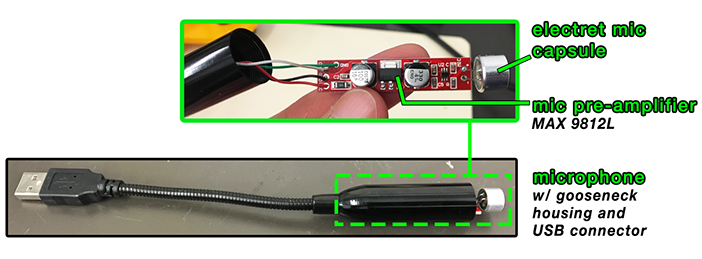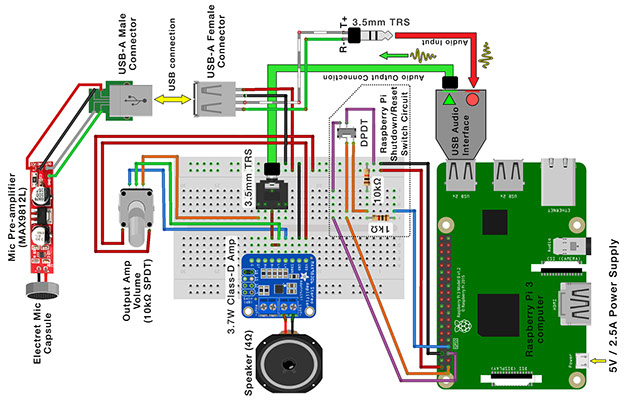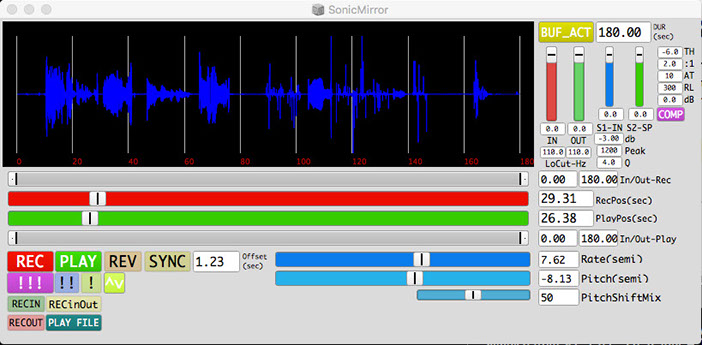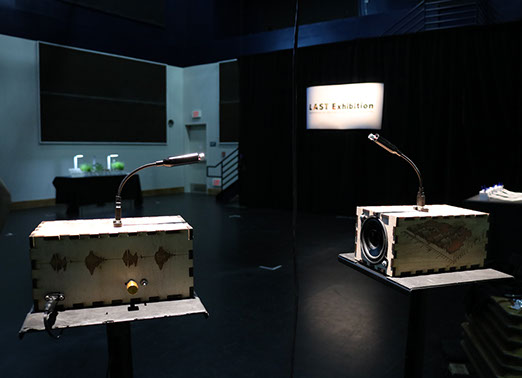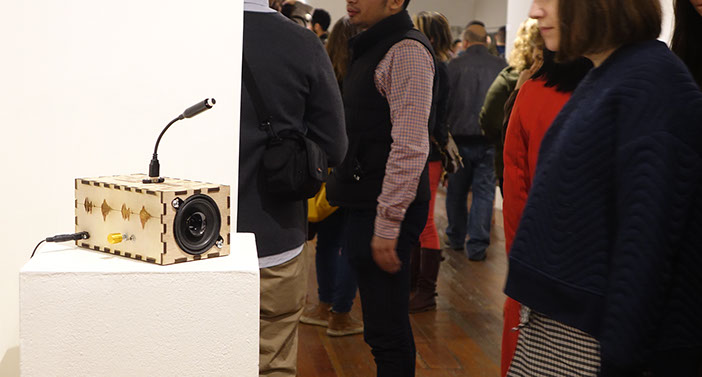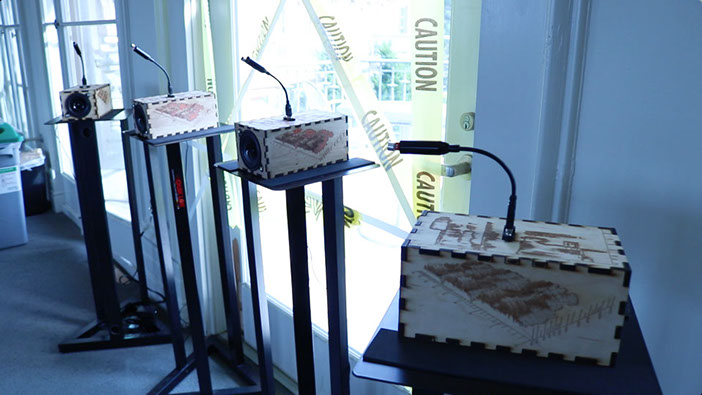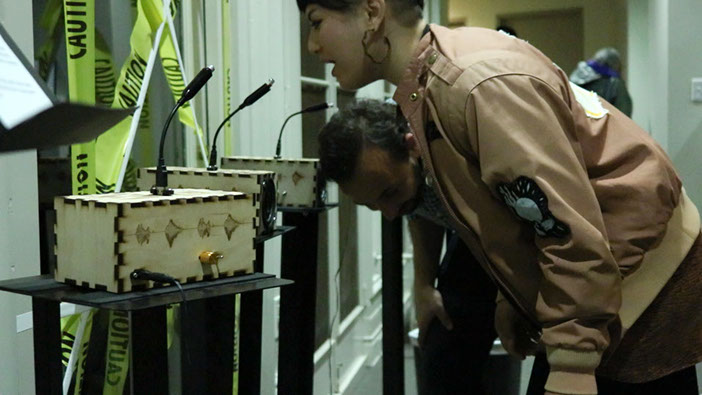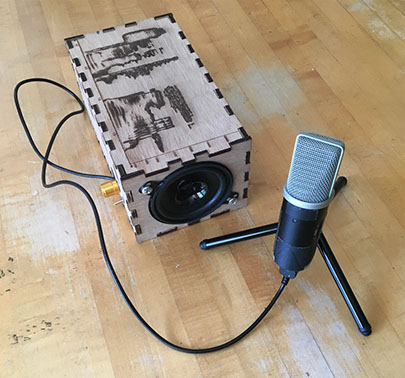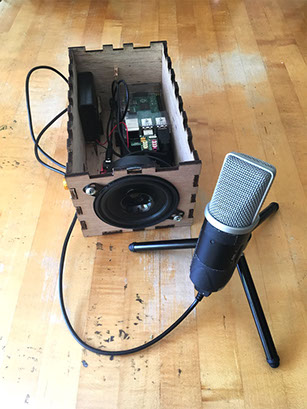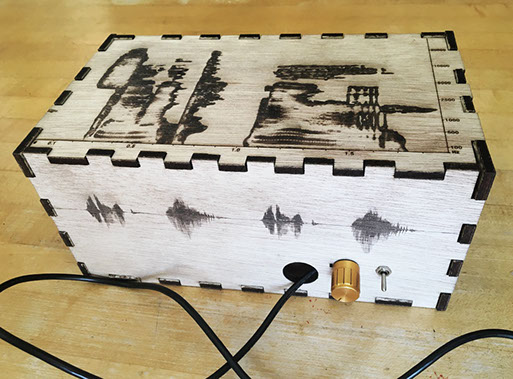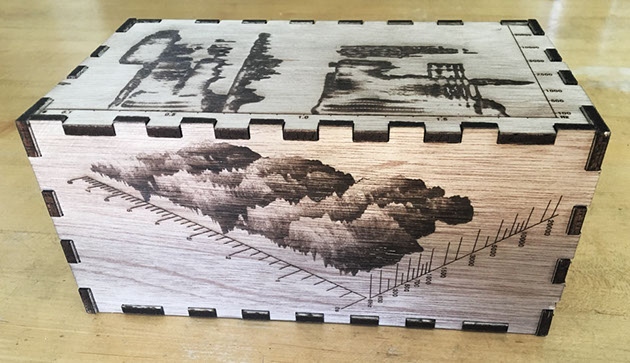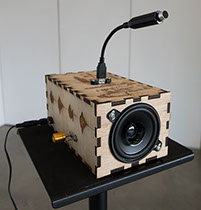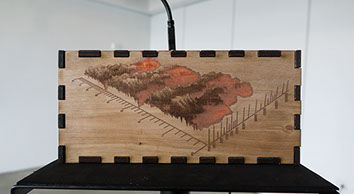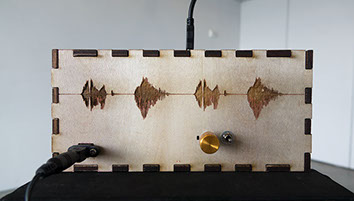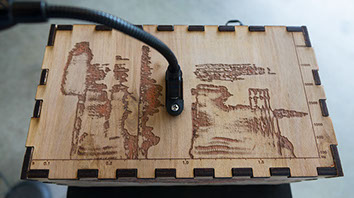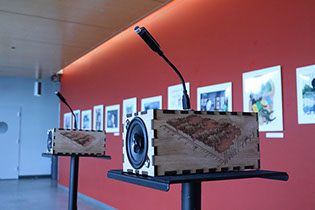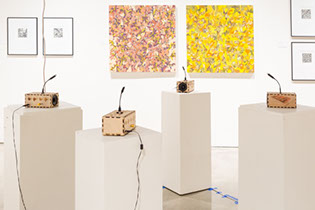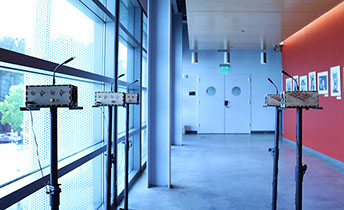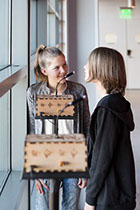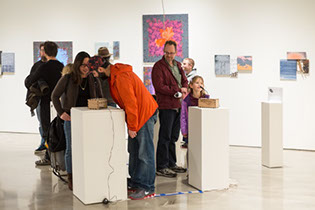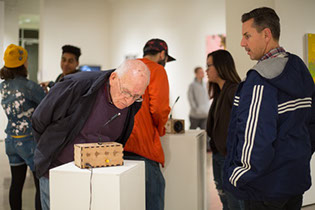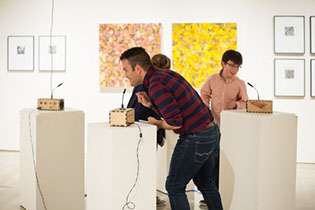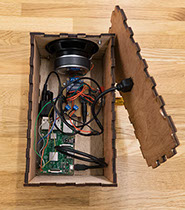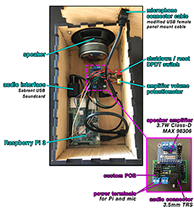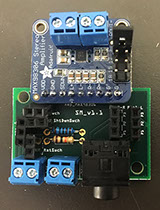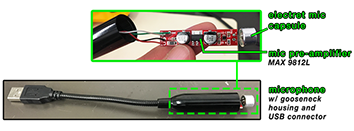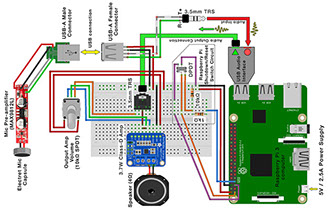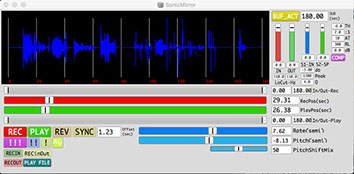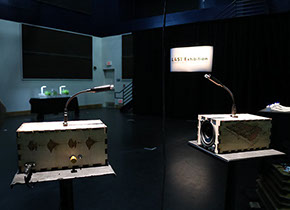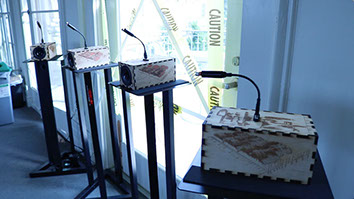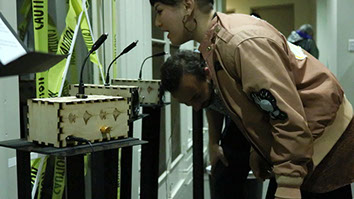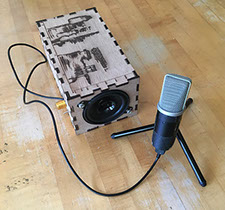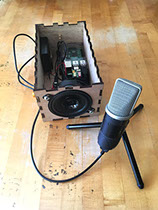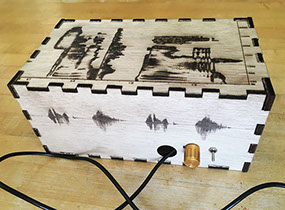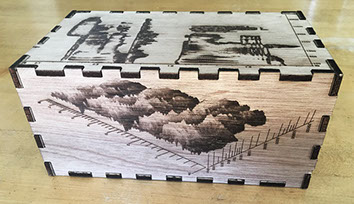SCOTT TOOBY
Use headphones or good speakers for the best listening experience.
The Sonic Mirror is an electronic instrument that automatically generates musical soundscapes from the sounds of its environment.
Through the combination of generative audio software, and embeddable digital audio and computing technology, Sonic Mirrors create interactive and immersive experiences that aim to heighten human awareness and engagement with the sounds of our surroundings.
To date, the Sonic Mirror has been implemented as a collection of hardware instruments, room-scale sound installations, and as an automated acoustic testing system for materials and robotics engineering research at UC Santa Cruz.
Sonic Mirrors have been exhibited at the following art and music venues:
• ICA Live!, San Jose Institute of Contemporary Art, California, February 2018
• ultraSHIFT MFA Exhibition, Digital Arts and New Media Program, UC Santa Cruz, April - May 2017
• California Electronic Music Exchange Concerts (CEMEC), UC Santa Cruz, April 2017
• California Electronic Music Exchange Concerts (CEMEC), CCRMA at Stanford, April 2017
• Life Art Science Technology (LAST) Festival, San Jose, April 2017
• MFA Now Exhibition, Root Division Gallery, San Francisco, March 2017
• The Cosmos, Santa Cruz Museum of Art and History, May 2016
The Sonic Mirror’s design is open-ended and reconfigurable, requiring at a minimum a microphone, speaker, computer, and digital audio interface; but it is extensible for larger multi-channel sound systems as well.
The Sonic Mirror uses a microphone to record sounds as digital audio files, and then dynamically transforms and sequences them in response to their unique sonic characteristics (loudness, pitch, duration, timbre) as well as general patterns of environmental acoustic activity (long periods of silence or loudness, etc).
Recorded sounds are transformed using a variety of digital audio synthesis techniques, including: pitch shifting; time stretching; granular, modulation and concatenative synthesis; convolution, and more. The software is developed in SuperCollider, and an active development branch can be found here.
The name and functionality behind this project is inspired by a concept for a cybernetic environmental sound installation initially conceived of by composer and bioacoustic researcher David Dunn (11).
If you want to learn how to make your own Sonic Mirror, or learn all the details about how the hardware instruments were made, check out the Instructable here.
MUSIC
HELLO
CONTACT
